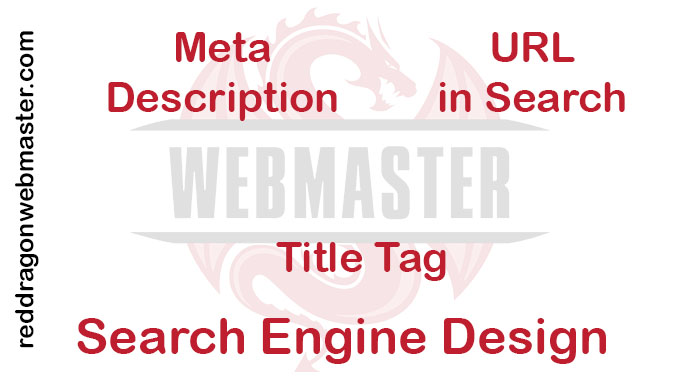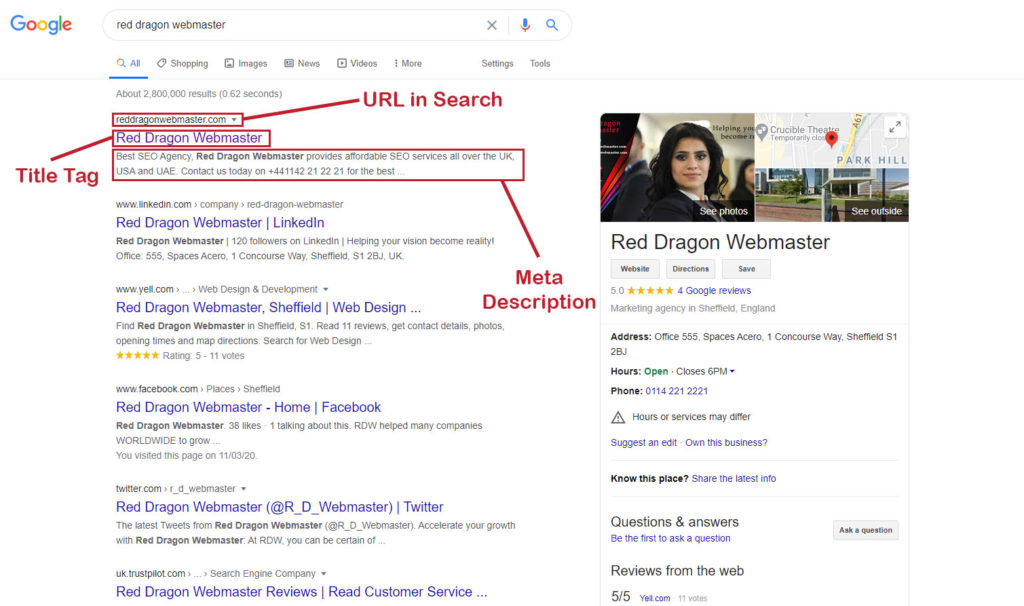

Search Engine Design
Basics of search engine friendly design and development
KEYWORDS: SEO DESIGN, SEO development, Title Tags
Be conscious of length:
Search engines only show the primary 65-75 characters of a title tag within the search results (after that, the engines show associate degree omission – “…” – to point once a title tag has been cut off). This can also be the final limit allowed by most social media sites, thus sticking to these prescribed limits is usually wise. However, if you are targeting multiple keywords (a particularly long keyword phrase), and having them within the title tag is crucial to ranking, it’s going to be judicious to have a longer title tag.
Place vital keywords about to the front:
The closer to the beginning of the title tag your keywords are, the more useful they will be for ranking, and will also help a user to find them in the search results.
Include Brand Recognition:
Each title tag can end with a mention of your brand, as this technique helps to extend brand awareness and build a good click-through rate. It can also be effective to put your brand name at the start of a title tag, such as your homepage. Because words at the start of the title tag carry a lot of weight, be conscious of what you’re making an attempt to rank for.
Consider readability and emotional impact:
Title tags need to be descriptive and clear. The title tag may be a new visitor’s 1st interaction with you, and first impressions make lasting memories. Making a compelling title tag can grab attention on the search results page, and may attract many visitors to your website. This underscores the importance of SEO: that it is concerning not solely with optimisation and strategic keyword usage, but with the whole user expertise.
Best Practices for Title Tags:
Meta Tags:
Meta tags were originally meant as a proxy for data on a website’s content. Many of the essential Meta tags are listed below, together with an outline of their use.

Meta Robots:
The Meta Robots tag will be useful for computer-programmed crawler activity (for all of the main engines) on a per-page level. There are many ways that Meta Robots can be used to change how search engines treat a page:
• Index/no index tells the engines whether or not the page ought to be crawled and unbroken within the engines’ index for retrieval. If you decide to use “no index”, the page is excluded from the index. By default, search engines assume they will index all pages, thus labelling a page with the “index” tag is usually not essential.
• Follow/no follow tells the search engines whether or not links on the page ought to be crawled. If you have chosen to use “no follow”, the engines can disregard the links on the page for discovery, ranking functions, or both. By default, all pages are assumed to possess the “follow” attribute.
Example: <META NAME=”ROBOTS” CONTENT=”NOINDEX, NOFOLLOW”>
• No archive is used to limit search engines from saving a cached copy of the page. By default, search engines can maintain visible copies of all the pages they need indexed, accessible to searchers through the cached link within the search results.
• no snippet informs search engines that they must refrain from displaying a descriptive block of text next to the page’s title and URL within the search results.
• noodp/noydir are specialised tags telling the engines not to grab a descriptive snipped from a couple of page from the Open Directory Project (DMOZ) or the Yahoo! Directory to show within the search results.
The X-Robots-Tag HTTP header directive additionally accomplishes these same objectives. This method works particularly well for content inside non-HTML files, like pictures.
Meta Description:
The Meta description tag exists as a brief description of a page’s content. Search engines don’t use the keywords or phrases during this tag for rankings. However, Meta descriptions are the first supply for the snippet of text displayed at a lower place an inventory within the results.
The Meta description tag serves the function of advertising copy, drawing readers to your website from the results. It’s a particularly vital a part of search promoting. Crafting a clear, compelling description containing vital keywords (notice however Google bolds the searched keywords within the description) will draw a far higher click-through rate of searchers to your page.
Meta descriptions can be any length. However, search engines can typically cut snippets of longer than a hundred and sixty characters, thus they typically keep inside in these limits.
In the absence of Meta descriptions, search engines can produce the search snippet from different components of the page. For pages that focus on multiple keywords and topics, this can be a wonderfully valid man oeuvre.
Not as vital: Meta tags:
Meta Refresh, Meta Revisit-after, Meta Content-type, and others: although these tags will have uses for computer-programmed optimisation, they’re less vital to this method, so we’ll leave it to Google’s Search Console facilitate to debate this in more detail.
Meta Keywords: The Meta keywords tag was valuable in the past. However, it is no longer of any value or vital to search engine optimisation. For a fuller history of Meta tags and why meta keywords have fallen into disuse, type “Meta Keywords 101” into a search engine.
URL Construction tips:
Employ fellow feeling:
Place yourself within the mind of a user and browse your URL. If you can simply and accurately predict that the content is the way you’d expect to search on the page, your website is suitably predictive.
You don’t need to put all the detail on the URL, but having a rough plan is useful.
Shorter is best:
While a descriptive uniform resource locator is very important, minimising length and trailing slashes can create your URLs easier to repeat and paste (into emails, blog posts, text messages, etc.) and can be totally visible within the search results.
Keyword use is very important (but overuse is dangerous):
If your page is targeting a particular term or phrase, make certain to incorporate it within the URL. However, do not go overboard by making an attempt to stuff in multiple keywords for SEO purposes. Overuse of keywords can lead to less usable URLs and may trip spam filters.
Use hyphens to separate words
Not all net applications accurately interpret separators like underscores (_), and signs (+), or areas ( ), so instead use the hyphen character (-) to separate words effectively on your web-page, for example, “Google-fresh-factor” would be the best way to punctuate this particular phrase.
Canonical and Duplicate Versions of Content:
Duplicate content is one among the most frustrating and difficult issues any web site will face. Over the past few years, search engines have cracked down on pages with skinny or duplicate content by demoting them to the lower rankings.
Canonicalization happens once two or more duplicate versions of a web-page are seen on completely different URLs. This can be quite common with fashionable Content Management Systems. As an example, you may provide an everyday version of a page and a print-optimised version. Duplicate content will even appear on multiple websites. For search engines, this presents an enormous problem: should that version of this content show to searchers? In SEO circles, this issue is usually remarked as duplicate content.
Call Now Button


